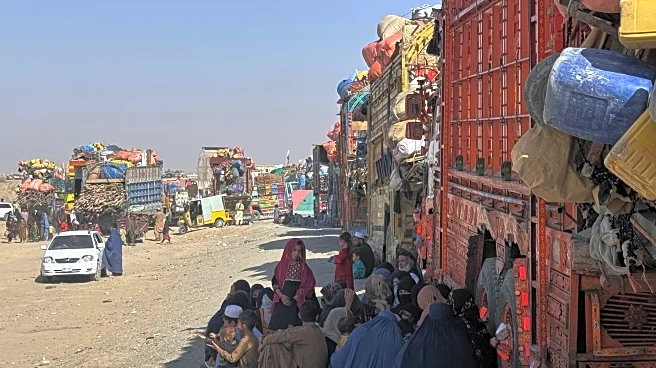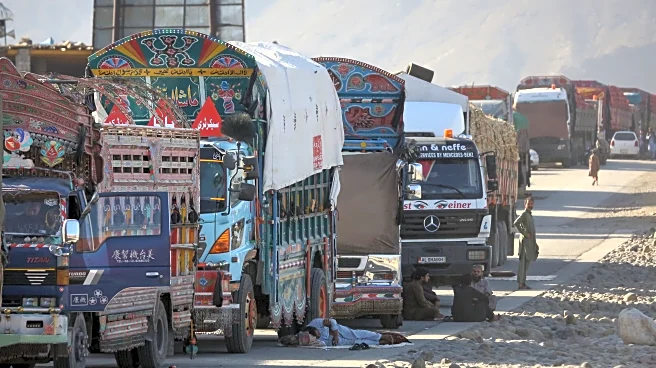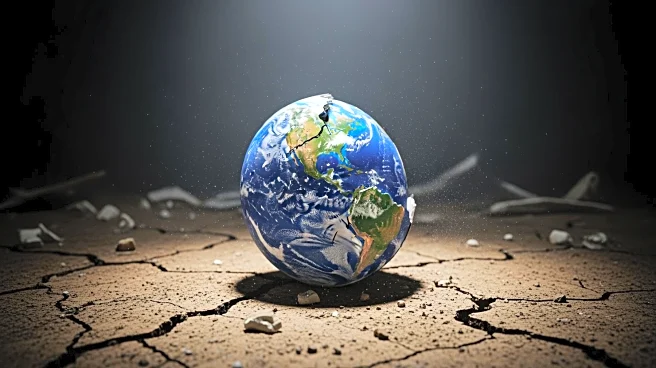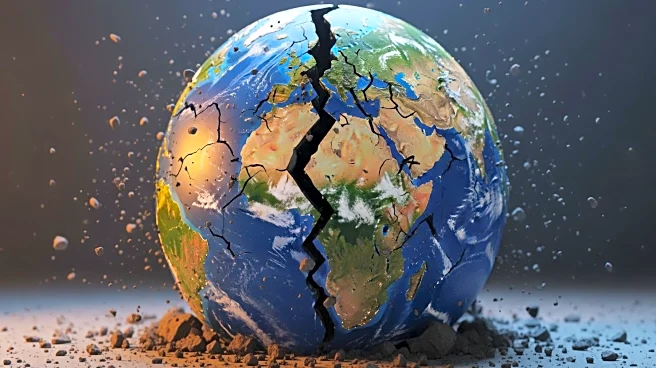What's Happening?
A powerful 6.3-magnitude earthquake struck northern Afghanistan near the city of Mazar-e Sharif, as reported by the U.S. Geological Survey. The earthquake resulted in at least 20 fatalities and injured over 534 individuals, according to the Afghan Health
Ministry. The city of Mazar-e Sharif, with a population exceeding 500,000, experienced significant damage. The Taliban government’s chief spokesman, Zabihullah Mujahid, confirmed the loss of life and property, stating that authorities are providing necessary assistance. The northern provinces, particularly Balkh and Samangan, were severely affected, with Balkh reporting seven deaths and over 400 injuries, while Samangan reported 11 deaths and more than 140 injuries.
Why It's Important?
The earthquake highlights the vulnerability of Afghanistan to natural disasters, exacerbated by its location on several fault lines. The recent quake follows a devastating 6.0-magnitude earthquake in August that killed over 1,400 people. The disaster response is complicated by reduced international aid, particularly from the U.S., which has cut nearly all humanitarian and economic projects in Afghanistan. This reduction in aid, coupled with the reluctance of international donors to support the Taliban regime, poses significant challenges to effective disaster management and recovery efforts. The United Nations is working to deliver urgent aid, but the situation underscores the ongoing humanitarian crisis in Afghanistan.
What's Next?
Rescue operations are underway to assess the full extent of the damage and provide aid to affected areas. The international community, including the United Nations, is mobilizing resources to support relief efforts. However, the political dynamics and reduced foreign aid may hinder long-term recovery and rebuilding efforts. The Afghan government and international organizations will need to coordinate closely to address immediate needs and plan for sustainable recovery.

















